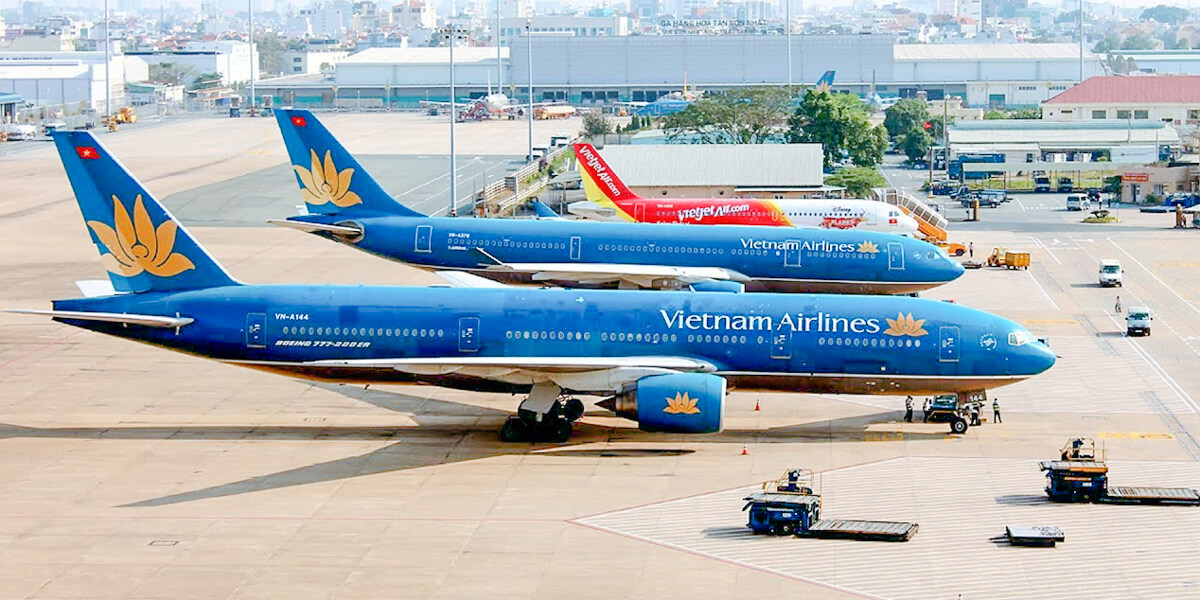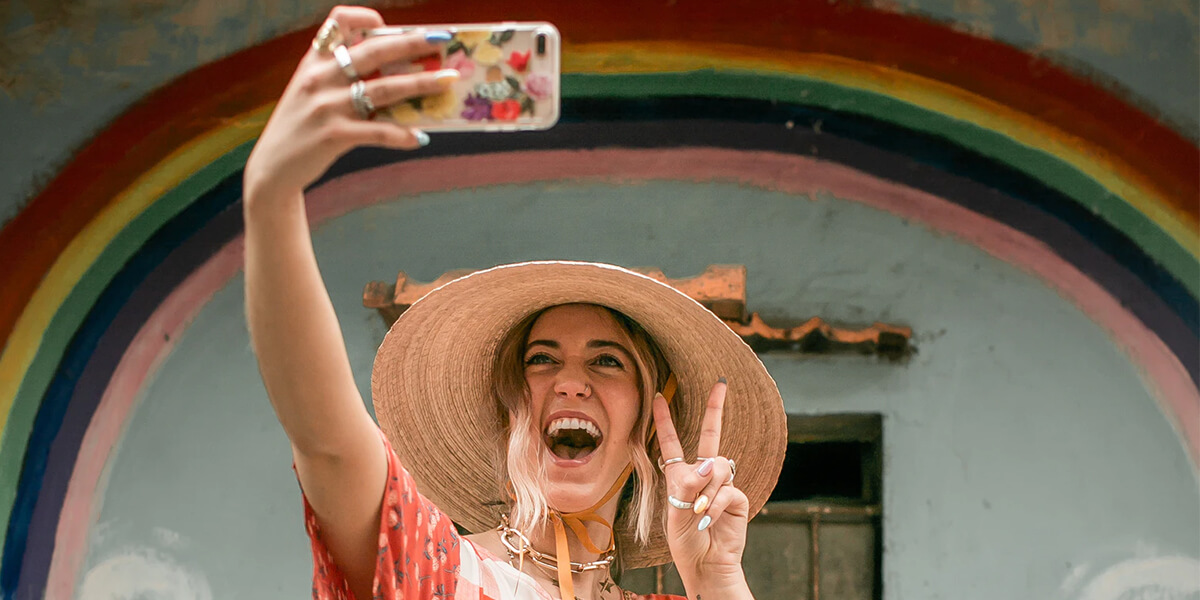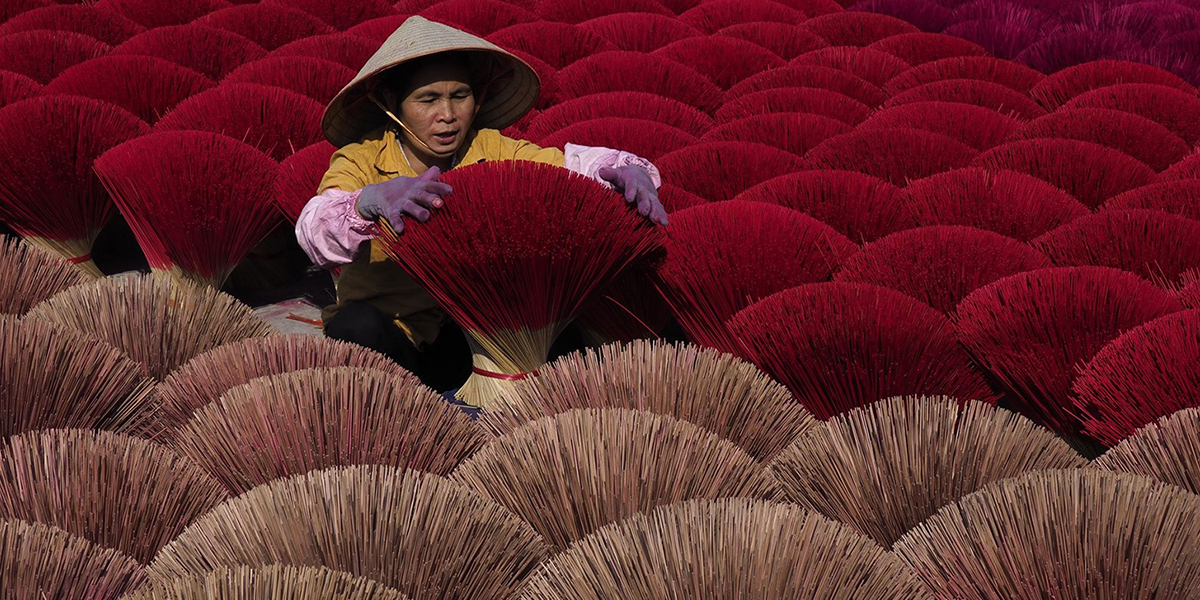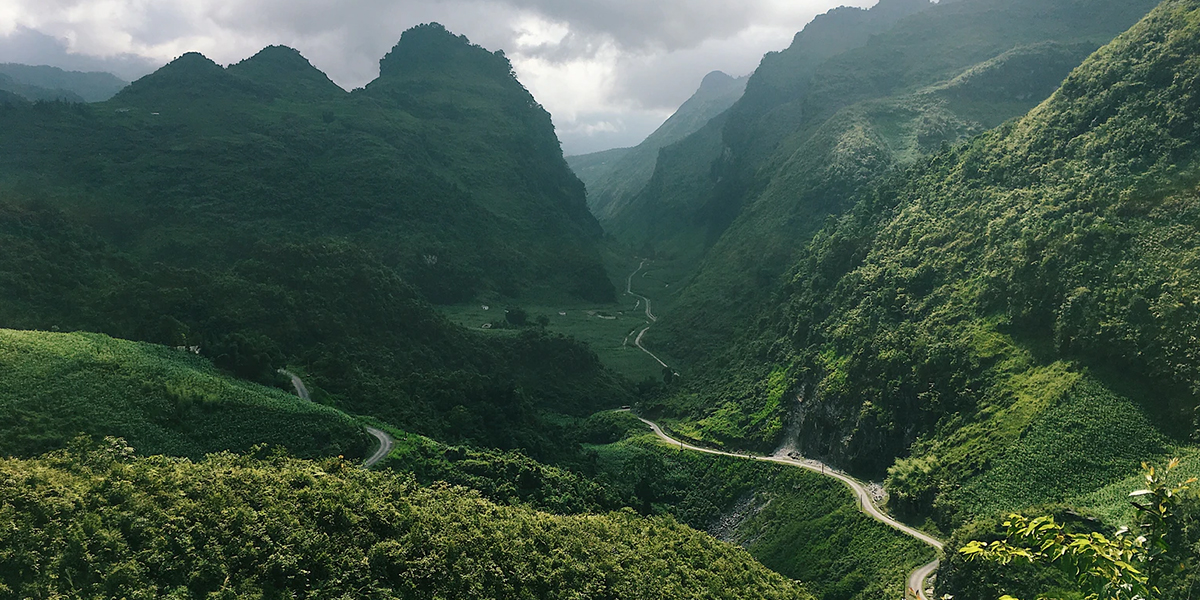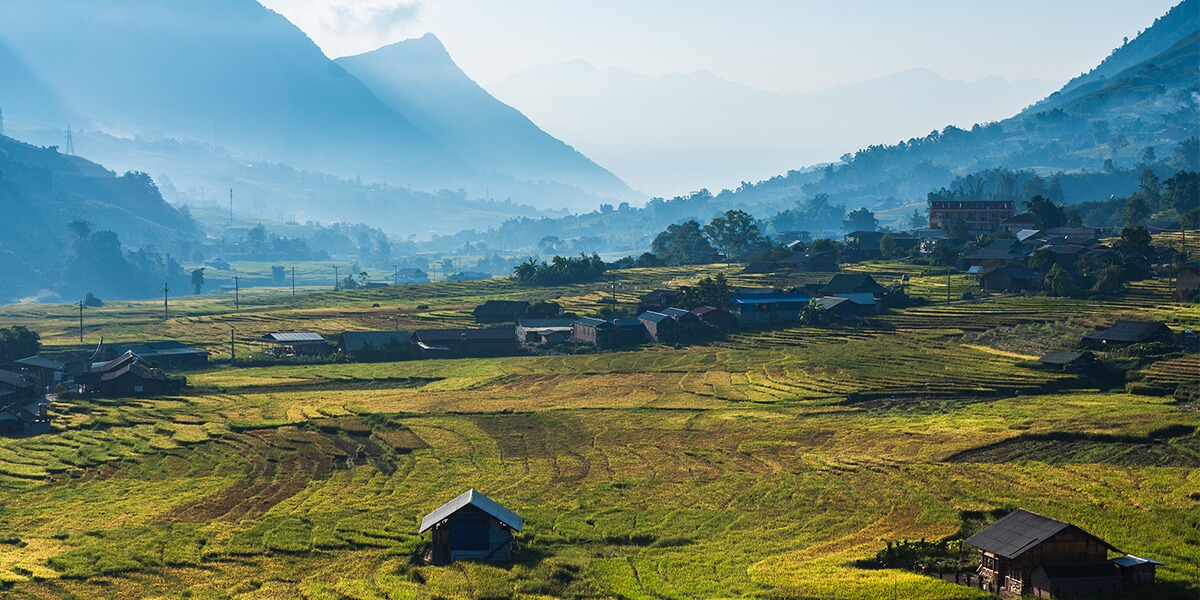Ho Chi Minh Mausoleum, the final resting place of Vietnam’s greatest leader, is a must-visit historic site in Hanoi. The mausoleum is surrounded by many kinds of plants & a long green bamboo grove. Each plant and material is contributed from all provinces along the country to show Vietnamese’s love and respect to the Nation's great Father.
I - Where is Ho Chi Minh Mausoleum Hanoi located?
The mausoleum is located at No.2, Hung Vuong Street, Dien Ban Ward, Ba Dinh District - in the center of Hanoi.
The whole mausoleum is a square-shaped block. In front of the mausoleum is Ba Dinh Square with a path for the parade, a large green grass square and a flagpole. Top nearby attractions & important structures such as Ho Chi Minh Museum, the Presidential Palace, One Pillar Pagoda,...
You can get to Ho Chi Minh’s Mausoleum by bus, motorbike and taxi.
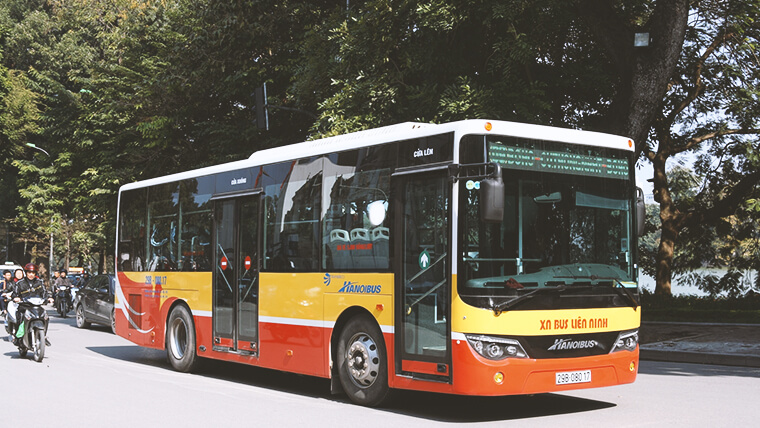
Source: Wiki
Bus
There are 3 suitable bus lines, which are:
- Bus No.22: Get off the bus at Tran Phu Street or Hoang Dieu Street then walk 1km.
- Bus No.33: Get off the bus at Hoang Dieu Street then walk 500 - 800m.
- Bus No.50: Get off the bus at Tran Phu Street or Hoang Dieu Street then walk 1km.
Motorbike
If you travel by motorbike to Uncle Ho’s Mausoleum, you can park your scooters at Ong Ich Khiem Street (opposite to the High Command of Capital Hanoi) or at No.19 Ngoc Ha Street (near the entrance to Ho Chi Minh Museum).
Taxi
Taking a taxi is the most convenient way for getting around. Some taxi brands in Hanoi:
- Mai Linh Taxi - 024.38.333.333
- Group Taxi - 024.38.26.26.26
- ABC Taxi - 024.37.19.19.19
II - Notes when visiting the mausoleum
1 - Ho Chi Minh Mausoleum visiting hours

Source: VnExpress
The ceremony to visit President Ho Chi Minh is held in the mornings: Tuesday, Wednesday, Thursday, Saturday, Sunday, while there is no visitation ceremony on Monday and Friday.
From April 1 to October 31
- Weekdays: 7:30am to 10:30am
- Saturday, Sunday and public holidays: 7:30am to 11pm
From November 1 to March 31
- Weekdays: 8am - 11am
- Saturday, Sunday and Vietnamese public holidays: 8:30am to 11:30am
Note: On May 19 (Uncle Ho's birthday), September 2 (Vietnamese National Day) and the 1st of the Lunar New Year, if it is on Monday or Friday, a ceremony to visit President Ho Chi Minh is still held.
3 - How much is Ho Chi Minh Mausoleum entrance fee?
Uncle Ho's Mausoleum does NOT charge an entrance fee.
Gathering place before visiting the mausoleum: No.17 Ngoc Ha Street, Ba Dinh District, Hanoi. (Phone: 024 38455128)
4 - Rules and regulations
- You should keep silent and walk slightly
- No filming and photography
- Age limitation: For all adults and children from 3 years old
- Electronic devices: Before entering the mausoleum, you must ensure that the network signals and sounds from mobile phones are completely turned off.
- Ho Chi Minh Mausoleum dress code: Casual clothes & dress politely
4 - Activities

The flag-raising ceremony - Source: Kenh14
In front of Uncle Ho's Mausoleum, there is a 29m high flagpole where the flag-raising and the flag-lowering ceremony takes place every day. These 2 national ceremonies are performed by the Ministry of Command - Mausoleum Management Board.
The flag-raising ceremony
At 6am, a parade of 37 soldiers in white uniforms carrying the national flag come from behind Ho Chi Minh's Mausoleum to the flagpole in the national anthem music. After getting the command, the flag is slowly raised to the top in the echo of the Vietnamese national anthem. When the lyrics of the national anthem ended, the flag was raised to the top and fluttered in front of the mausoleum.
The flag-lowering ceremony
The flag-lowering ceremony takes place at 9pm, with the same rituals as the flag-raising ceremony. After the flag is lowered, a parade of 37 soldiers march across Uncle Ho's mausoleum in the solemn national anthem music.
III - The architecture of President Ho Chi Minh Mausoleum

The mausoleum from a distance - Source: Vietfuntravel
The mausoleum was constructed on September 2, 1973, and completed in 1975 at the old monument between Ba Dinh Square - Hanoi.
Looking from the outside, the mausoleum includes a central work and two sub-central monuments on two sides. There is a 3-step base forming a firm and dignified foundation for the mausoleum. The roof of the mausoleum also follows the 3-step architecture. The mausoleum’s body is a square-shaped block, with four sides connected by marble columns with columns. All the parts create an impressive 5-part architectural construction. The facade’s highlight detail is the line of 5 words “PRESIDENT HO CHI MINH” made of marble.
Inside Ho Chi Minh Mausoleum Vietnam is the special room for keeping the president’s body as well as the room consisting of more than 200 sets of doors made of precious wood created by skillful carpenters from Southern Vietnam. The embalmed body of President Ho Chi Minh is on a bronze bed carved lotus pattern, preserved in a glass coffin and placed on a rock pedestal at the center of the mausoleum. The coffin & pedestal is protected by an automatic lift system and four military honor guards all day.
On the two sides of the stairs, there are two large halls paved with black marble. On the wall, there are two flags made of 4000 pieces of rubies, in which one is the red Vietnam national five-pointed star flag and the other is the communist party flag.
IV - Maybe you need before visiting Ho Chi Minh Mausoleum Hanoi
1 - Introduce President Ho Chi Minh
President Ho Chi Minh (May 19, 1890 - September 2, 1969) was born in Kim Lien village, Nam Lien commune, Nam Dan district, Nghe An province (in the Northern Central region of Vietnam). In the hearts of every Vietnamese, Ho Chi Minh is a national Great Father, a national hero, who enlightens the path of liberation, independence, and happiness for Vietnam.

Source: Internet
With deep and great respect to President Ho Chi Minh’s contributions, the government of the Democratic Republic of Vietnam decided to build the Ho Chi Minh Mausoleum in Hanoi to worship and commemorate Uncle Ho. His whole life is devoted to Vietnam's liberation & independence. As the first President of the Democratic Republic of Vietnam (from 1945 to 1969), the dazzling milestones in his political-military career are closely linked to the development of the Vietnamese Communist Party and the National Liberation Process:
- On February 3, 1930, President Ho Chi Minh held an important meeting to reunite three separated parties to establish the Communist Party of Vietnam in Cuu Long - Hong Kong.
- On September 2, 1945, Uncle Ho with the role of a representative of the Communist Party of Vietnam and the people working across the country proclaimed the Vietnamese Declaration of Independence, giving the start of the Democratic Republic of Vietnam.
2 - Impressive attractions in Ho Chi Minh Mausoleum Complex
Besides the mausoleum, there are many nearby attractions that you shouldn’t miss:
Ba Dinh Square
Located right in front of the mausoleum, Ba Dinh is the largest square in Vietnam. The square is the place witnessing and experiencing numerous historical events of Vietnam. Especially the event on September 2 1945 when President Ho Chi Minh proclaimed the "Declaration of Independence" giving birth to the Democratic Republic of Vietnam.
Uncle Ho's Stilt House
Ho Chi Minh’s Stilt House in Ho Chi Minh Mausoleum Complex is where Uncle Ho lived and worked for a long time from May 17, 1958, to September 2, 1969. The house not only has an important role in history but also is considered a typical architectural heritage of Vietnam.
Tickets to visit Uncle Ho's stilt house are 25,000 VND/person ($1).
Presidential Palace
It has retained an ancient and elegant architectural beauty for over 100 years.
Ho Chi Minh Museum
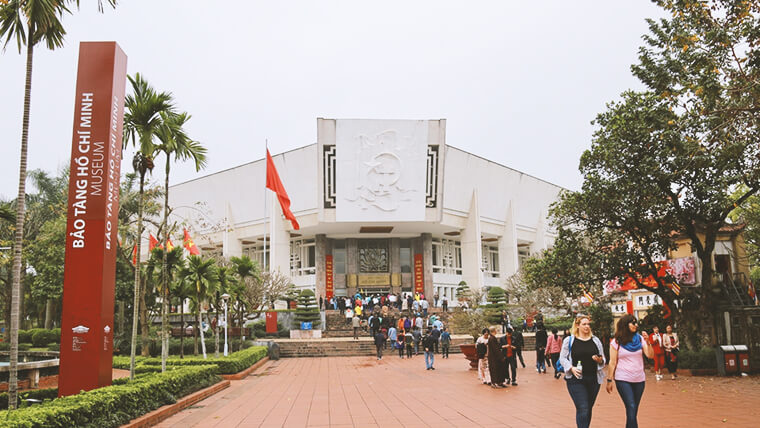
Ho Chi Minh Museum in Ho Chi Minh Mausoleum Complex - Source: Internet
This is the largest museum in Vietnam, having a total area of up to 18,000m² displaying about 12,000 artifacts related to his life and career.
One Pillar Pagoda
This is the most long-standing spiritual site in Hanoi and is so famous for its unique architecture (looking like a lotus). The pagoda was built in 1049 under King Ly Thai Tong. In 1105, King Ly Nhan Tong renovated and expanded it to larger zones.
Suggested Ho Chi Minh Complex exploring route: Ho Chi Minh Museum, One Pillar Pagoda, Ho Chi Minh Mausoleum, Ba Dinh Square, Presidential Palace and Uncle Ho's Stilt House.
The total cost of the tour is only 90,000 VND/person (~ $3.7):
- One Pillar Pagoda: 25,000 VND/ person/ visit ($1)
- Ho Chi Minh Museum: 40,000 VND/ person/ time ($1.7)
- Uncle Ho's stilt house: 25,000 VND/person ($1)
The ideal time to visit these attractions and Hanoi is from August to November (Fall time in northern Vietnam) when the weather in Hanoi is so nice.
That is our Ho Chi Minh Mausoleum Hanoi travel guide. Have a nice trip to Hanoi!







.jpg) — Ha Bich
— Ha Bich
